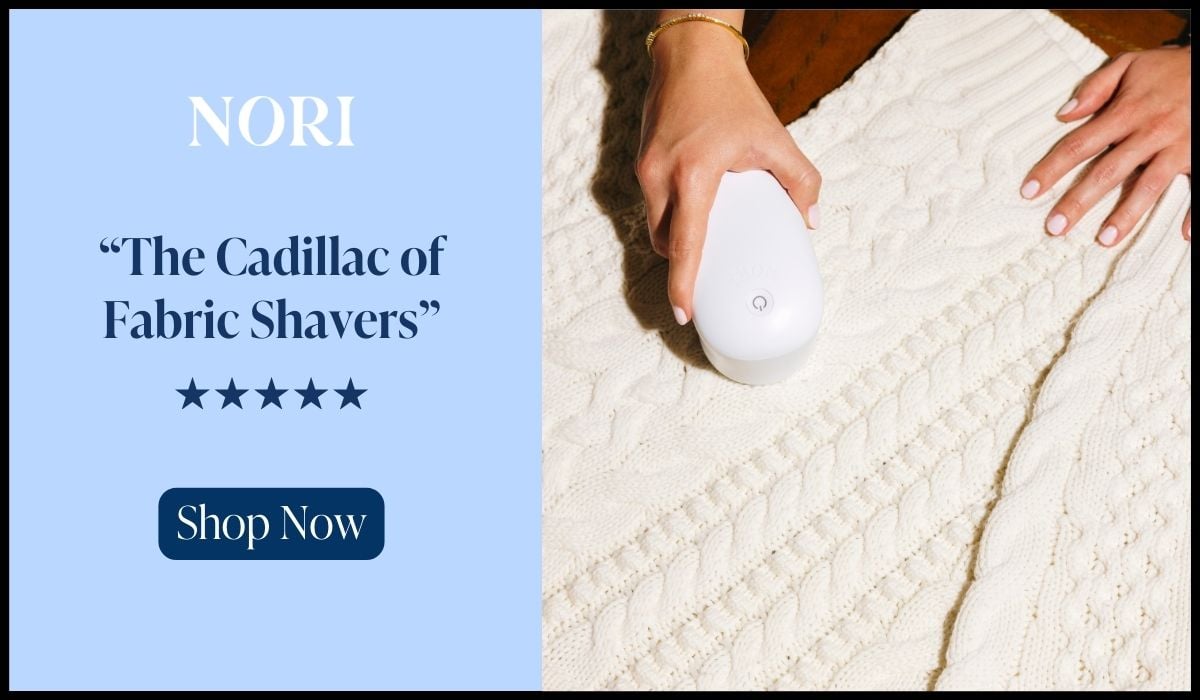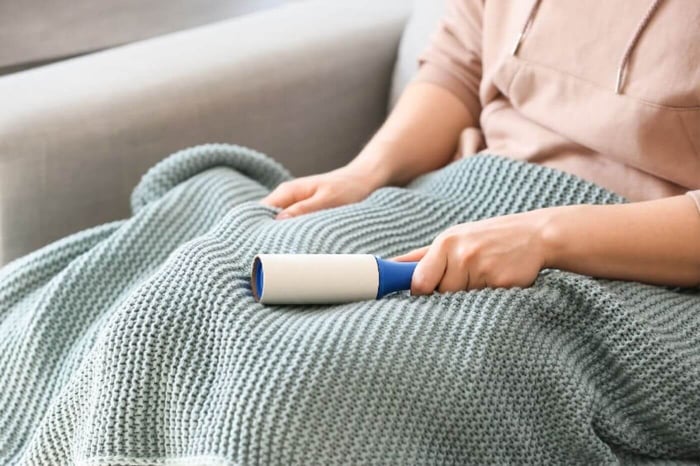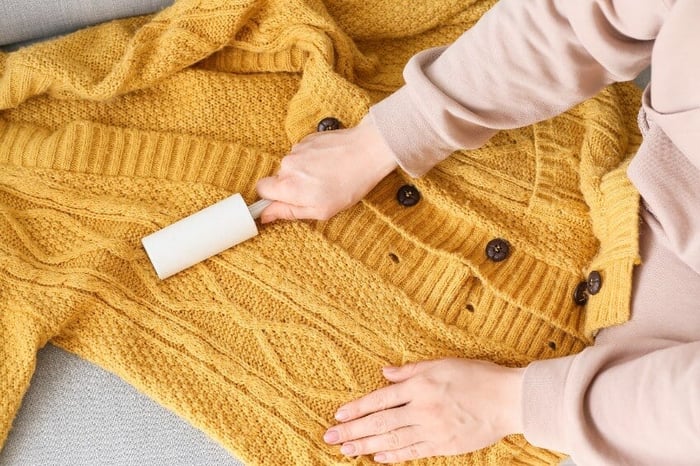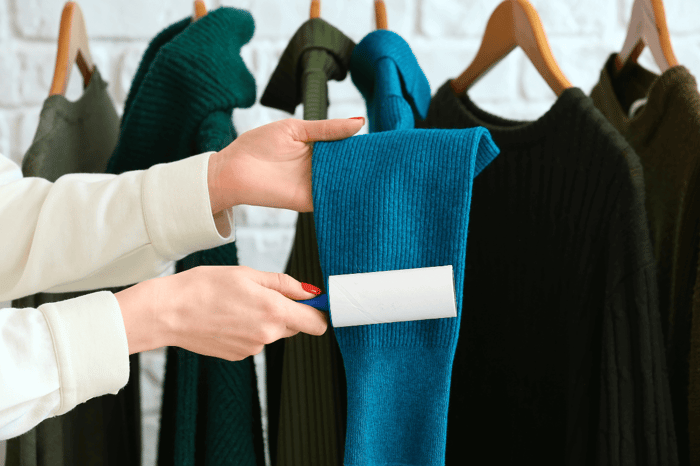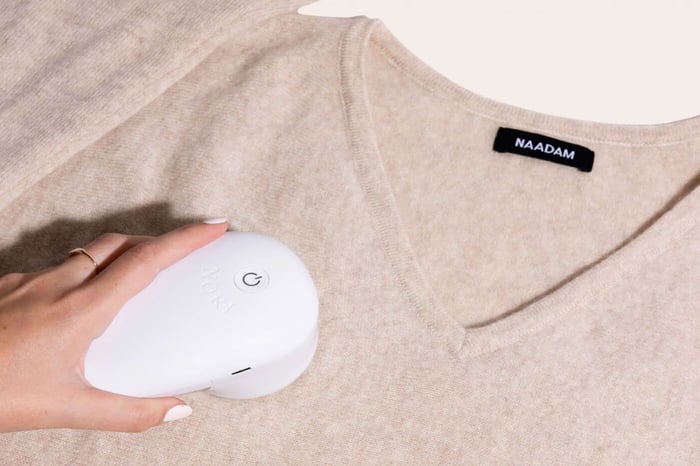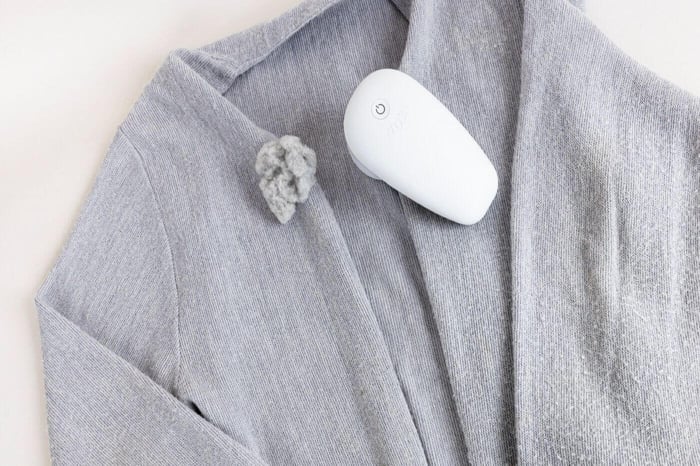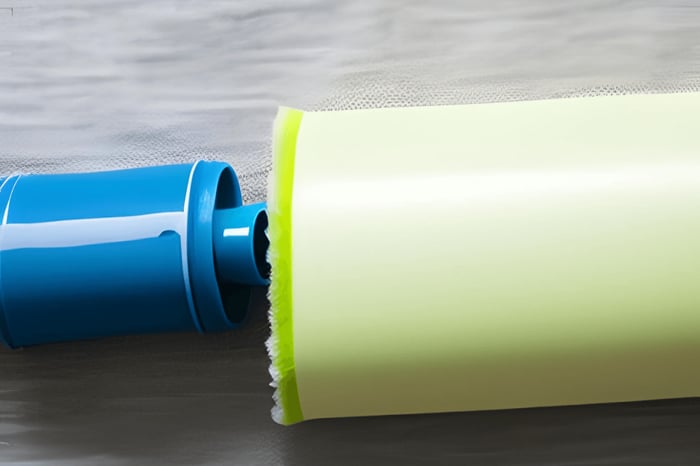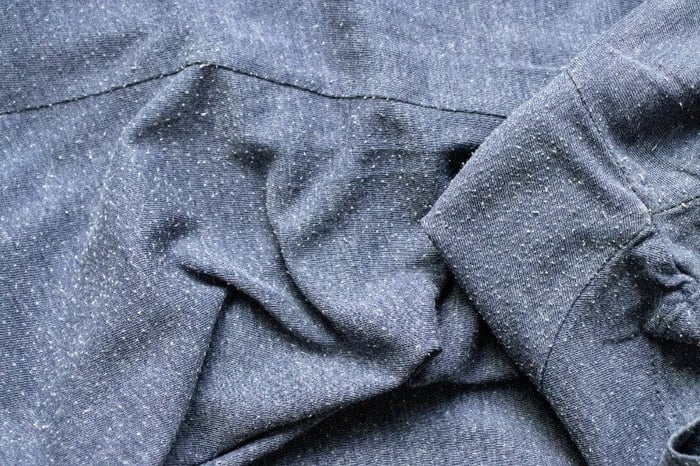
Wondering how to get lint off new towels? It’s inevitable when you buy a new towel: lint. You take it out of the packaging and all of sudden, your soft fluffy towel has been taken over by pesky pieces of fabric. Having fresh towels is crucial for maintaining a clean and professional appearance. But don’t worry!
There are several ways how to get lint off new towels so you can enjoy your new towels in their original glory. The best way is using the Nori Trim. It features six precision razor blades and a large shaving area, making it effective for removing lint in new towels.
Lint balls can be a concern as old towels shed, affecting their quality and appearance. We’ll show you how to get lint off new towels quickly and easily with our five simple steps - from pre-wash preparation to maintenance & storage tips. So if want to know exactly what tools or techniques work best for removing lint from those brand-new towels, read on – we’ve got everything covered! Here's how to get lint off new towels.
Attention: Use discount code “SHOP10” at checkout to save 10% on The Nori Trim!
Pre-Wash Preparation
When it comes to preventing pilling on clothes, pre-washing is key. Before using any new towels or clothing items, they should be washed in cold water with a mild detergent and no fabric softener. This helps remove any loose fibers that may come off during the first wash cycle and cause lint buildup. Additionally, dissolving baking soda in hot water before washing can help reduce lint and prevent towel shedding.
Using hot water can also help set the color of your fabrics so that it doesn’t fade over time, but you should avoid washing delicate items like lingerie in hot water as this can damage them. If you have very delicate fabrics such as silk or cashmere, hand washing is best to prevent pilling from occurring at all.
Another way to reduce lint build-up is by separating your laundry into different loads based on fabric type and color before putting them into the washer. Dark colors should always be washed separately from light colors as dark dyes tend to bleed onto lighter-colored fabrics when wet which can create permanent stains if not taken care of properly. Washing similar materials together will also help keep lint levels low since heavier fabrics are more likely to produce more lint than lighter ones due to their increased surface area rubbing against each other while being agitated in the machine.
Soaking towels in a solution of hot water and baking soda before washing can also help prevent shedding and improve softness.
Finally, check for signs of wear and tear before throwing anything into the washer. Look for rips or tears that could get worse after going through a wash cycle and either mend them beforehand or throw out those pieces altogether if necessary. Taking these extra steps will ensure that your garments stay looking great for longer.
By taking the time to prepare your new towels for their first wash, you can ensure that they stay lint-free for as long as possible. Now let’s look at some tools and techniques that can help remove any lint that may have already accumulated on your towels.
Lint Removal Tools
Lint removal tools are essential for keeping your clothes looking their best. Whether you’re dealing with lint on towels, sweaters, or other fabrics, there are several tools available to help you get rid of it quickly and easily.
The Nori Trim
For fast lint removal, you can use a fabric shave, like the Nori Trim. The Nori Trim is a high-performance fabric shaver designed to efficiently remove pills and lint. It features six precision razor blades and a large shaving area, making it effective for cleaning various fabrics. This tool can help keep new towels looking fresh and free from lint, enhancing their appearance and longevity. It's also wireless and rechargeable, with a detachable lint collector for easy cleaning.
Lint Roller
The most common tool is a lint roller. This handheld device has an adhesive surface that picks up lint from clothing as you roll it over the fabric. Lint rollers can be used on all types of fabrics and come in different sizes depending on how much area needs to be covered. They’re also easy to use – just press down lightly and roll back and forth until the lint is gone.
Pumice Stone
Another option is a pumice stone. Pumice stones have abrasive surfaces that can remove stubborn lint from thicker fabrics like towels or jeans without damaging them. To use one, simply rub the stone gently against the fabric in small circles until the lint comes off. Be sure not to apply too much pressure so as not to damage the material.
Razor Blade
Finally, if all else fails, you can try using a razor blade (or something similar). A razor blade should only be used as a last resort since it could potentially damage delicate fabrics like silk or cashmere; however, if done carefully it can work wonders at removing even tough-to-remove pieces of fuzz from heavier materials such as wool coats or blankets. Simply hold the razor blade at an angle away from your body while running it along any areas where there’s excess fuzz – but make sure not to press too hard.
Dryer Sheets
Dryer sheets are a great way to reduce static electricity and keep lint off towels during the drying process. Before using the dryer, make sure the lint trap is completely clean to maximize efficiency and reduce lint. Dryer sheets contain fabric softeners that help soften clothes, as well as chemicals that reduce static cling. To use dryer sheets properly, simply place one sheet on top of your load of laundry before you start the cycle. The heat from the dryer will activate the chemicals in the sheet and disperse them throughout your clothing items.
When using dryer sheets, it is important to replace them after each cycle. This helps ensure that all of your clothes get an even distribution of fabric softener and anti-static agents. It also prevents any buildup or residue from forming on your clothing over time due to multiple uses with one sheet.
If you’re looking for an easy way to add extra freshness and softness to your laundry, consider adding a few drops of essential oil onto each new dryer sheet before placing it into the machine with your load of laundry. Not only does this give a pleasant scent boost but can also provide additional benefits such as reducing wrinkles or helping prevent pilling on fabrics like cotton or wool sweaters which tend to pill easily when washed regularly without proper care techniques being used first (such as hand washing).
For those who prefer not to use chemical-based products in their laundry routine, there are natural alternatives available too. Wool balls are made out of 100% natural fibers and can be added directly into the drum along with your wet clothes - they act similarly by reducing static electricity while providing gentle exfoliation for softer fabrics like cotton or linens at no extra cost. Additionally, white vinegar is another great option for removing lint buildup; just add ½ cup per wash cycle alongside detergent for best results.
Using dryer sheets can help reduce the amount of lint on new towels, but washing them properly and using the right detergent is also important for preventing pilling. Next up, we’ll look at some tips to keep in mind when washing your towels.
Washing Tips with Fabric Softener
Washing towels correctly is essential to preventing lint buildup and pilling on your clothes. Here are some tips for washing towels that will help reduce the amount of lint in your laundry:
-
Pre-Wash Preparation: Before you wash, make sure all items are free from dirt and debris by shaking them out or using a lint roller. This will help keep the washer clean and reduce the amount of lint that gets trapped in fabrics during washing.
-
Lint Removal Tools: Investing in a good quality lint brush or roller can be very helpful when it comes to removing excess fuzz from clothing before putting them into the washer. This will also help prevent any fibers from getting caught up in other items while they’re being washed, which can cause pilling over time.
-
Dryer Sheets: Adding dryer sheets to each load of laundry helps reduce static cling, which can contribute to pilling on fabrics over time due to friction between garments as they move around inside the machine during spinning cycles. It’s best not to use fabric softener with towels as this could lead to an accumulation of residue that causes more pilling down the line.
When it comes time for washing, use a minimal amount of detergent and avoid using fabric softeners. Excess detergent can lead to residue buildup on towels, and fabric softeners can leave a coating on towel fibers, making them less absorbent and more prone to shedding. Opt for warm water instead of hot - too much heat can damage delicate fibers and cause more wear and tear than necessary on clothing items like towels. Do not overload your washer; if there is too much weight inside then clothes won’t get cleaned properly or evenly distributed throughout the cycle leading to uneven wear patterns across different parts of garments such as collars and cuffs where pilling tends occur most often due to friction caused by movement within confined spaces like pockets or sleeves etc. Use a gentle cycle setting with low spin speed so fabrics don’t get stretched out unnecessarily - this will ensure less stress is placed upon them while still achieving optimal cleaning results without damaging delicate fibers.
Shedding towels can be a common issue, especially with new towels. To prevent towels from shedding, avoid using fabric softeners and ensure proper washing and drying techniques.
After laundering, hang wet towels outside (if possible) rather than tumble drying them straight away - this helps prevent excessive shrinkage which can lead to further issues down the line such as premature fading or fraying at seams/edges etc. Additionally, always store folded linens away from direct sunlight - UV rays have been known to cause discoloration over time so keeping them tucked away somewhere dark and cool should do the trick here.
By following these washing tips, you can ensure that your towels remain soft and lint-free for years to come. Now let’s look at how proper maintenance and storage of your towels can help keep them looking like new.
Maintenance & Storage
Proper maintenance and storage of towels is key to keeping them free from lint. After drying, fold the towel neatly so that it won’t be exposed to excess friction which can cause pilling. Store the towel in a cool, dry place away from direct sunlight or heat sources. This will help keep your towels looking like new for longer periods of time. Additionally, older towels may require extra care to maintain their appearance and functionality.
If you have limited space for storing your towels, consider investing in some vacuum-sealed bags or plastic containers with airtight seals. These are great options as they reduce the amount of air exposure and prevent moisture buildup which can lead to mold growth on fabrics over time. Additionally, these types of containers also protect against dust mites and other allergens that may accumulate on fabric surfaces if left unprotected. Loose lint is a common issue with cotton towels, especially when they are new, and can be managed by proper storage and handling.
When laundering your towels at home, use cold water instead of hot water when possible as this helps preserve their color and texture while reducing wear and tear caused by hot water cycles over time. Also, avoid using too much detergent or fabric softener as this can leave residue behind on the fibers causing them to become stiffer after drying – leading to more pilling. If you do need extra cleaning power try adding a small amount of white vinegar during each wash cycle - it’s an effective natural cleaner without all those harsh chemicals found in many store-bought products today.
Finally, don’t forget about proper rotation when it comes to washing your towels; rotate between two sets so that one set has enough time to properly dry before being used again. This will help extend their life span significantly. Taking care not only prolongs the life span but also keeps them looking good for longer periods of time - no one wants dingy old-looking bath linens around their house.
Attention: Use discount code “SHOP10” at checkout to save 10% on The Nori Trim!
FAQs in Relation to How to Get Lint Off New Towels Using a Lint Roller
Why are my new towels lint?
Pilling on towels is a common issue that occurs when the fibers of the fabric become tangled and form small balls. This can be caused by friction from washing, drying, or even wearing them. Additionally, new cotton towels often shed loose lint due to the nature of cotton cloth, which releases lint during use, especially when the fabric is new. The quality of the cotton and the tightness of the yarn and fabric can also influence lint production. To prevent pilling, use gentle detergents and wash in cold water with similar fabrics to reduce abrasion. Additionally, avoid over-drying your towels as this will create more friction between the fibers. If you already have pilling on your towels, try using a lint roller or an electric fabric shaver to remove it before laundering again.
Why do my towels have so much fuzz?
Shedding towels is a common issue caused by the combination of friction and abrasion, leading to the release of loose fibers. This happens when two surfaces rub together, such as when you wrap yourself in a towel after showering or drying off. The fabric fibers become weak and start to break down, forming small balls of fuzz known as pills. Regular washing can help reduce pilling but it’s impossible to completely prevent it from happening. To remove existing pills, use a lint roller or gently shave them away with a razor or an electric pill remover device.
Conclusion
By following the tips outlined in this blog post, you can easily and quickly get lint off new towels. Pre-wash preparation, using the right lint removal tools, adding dryer sheets to your wash cycle and washing with care are all key steps for keeping your towels free of lint. With proper maintenance and storage techniques, you can ensure that your towels remain soft and fluffy for years to come!
Do you have brand-new towels that are already covered in lint? Are your clothes pilling up faster than you can keep them looking fresh and clean? Don't worry, Nori has the perfect solution for all of your laundry woes! Our easy-to-follow tips on how to get lint off new towels will help prevent future pilling on clothes and remove existing lint from towels. With our step-by-step instructions, we guarantee a hassle-free cleaning experience every time.
So don't wait any longer – take advantage of Nori 's advice today to make sure your fabrics stay soft, smooth, and beautiful. Get the Nori Trim today to get lint off new towels. Shop now !
